The Stabilizer Basics
Water Solubles and Heat-Away
In today’s Stabilizer Basics I am going to chat with you about Water Soluble (Solvy’s) and Heat- Awayâ„¢ stabilizers. These are both temporary stabilizers that started out with a couple simple applications, but, because you guys are so creative, you have discovered a million really cool uses for these amazing stabilizers!
Water Soluble Stabilizers
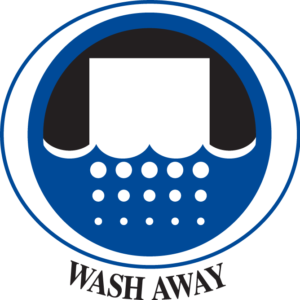 Water Soluble Stabilizers are just that, they dissolve in water. The number 1 use for the lightest weight Solvy is as a topper on napped fabrics, like towels, to keep the loops or pile from poking through the stitching; to prevent stitches from getting lost in the fabric; and/or to enhance the clarity of fine lettering and detail stitching. Sulky has several different types and weights in this category so let’s go through some of them!
Water Soluble Stabilizers are just that, they dissolve in water. The number 1 use for the lightest weight Solvy is as a topper on napped fabrics, like towels, to keep the loops or pile from poking through the stitching; to prevent stitches from getting lost in the fabric; and/or to enhance the clarity of fine lettering and detail stitching. Sulky has several different types and weights in this category so let’s go through some of them!
Sulky SolvyÂ
Sulky Solvy is the original water-soluble stabilizer and is my go-to topper. It is thick enough to help stabilize, but will tear away easily when the embroidery is done. I usually don’t even have to wet it to get the stabilizer off. Anytime I am doing a towel, if I am doing very small lettering or if I am just not sure how an embroidery will come out, I use Sulky Solvy as a topper.
Hint: Keep Sulky Solvy in the original clam shell that you purchased it in or in a zip-top plastic bag. Exposed to air it can get crispy or wimpy – depending on the climate in your home at the time. It will still work, but It is easier to work with when it is in its natural state.
Sulky Super Solvy
Super Solvy is slightly heavier than regular Solvy. Its primary use is still as a topper but it can also be used as an additional backing when doing free-standing lace designs (it’s too light to use alone for free-standing lace, though). As a topper, you may want this heavier Solvy when you are doing a very dense design or the the nap of a towel is particularly fluffy. I have used Sulky Super Solvy when I have done embroidery on Cuddle fabrics, too.
Sulky Ultra Solvy
Ultra Solvy is the heaviest Solvy we make. It feels sort of like a piece of vinyl. I love Ultra Solvy for doing very dense free-standing designs, for making thread scarfs and for doing lace or edging designs.  (When doing free-standing lace, try to find out what the design digitizer recommends – either the film-type like Ultra Solvy or the fabric-type like Fabri-Solvy.)
Sulky Fabri-Solvy and Sticky Fabri-Solvy
Fabri-Solvy is truly amazing and we keep finding new ways to use it that just make life “sew much easier!” Original Fabri-Solvy (without the sticky), started as a great way to do most free-standing lace designs. Because of it’s fabric-like feel, it is easy to hoop and is a perfect base for things like Christmas ornaments, bookmarks, and cut-work designs on towels. With the cut work designs, it is best to use a little KK 2000â„¢ Temporary Spray Adhesive to keep the towel in place, even if you hoop the towel along with the Fabri-Solvy.
Then, we introduced Sulky Sticky Fabri-Solvy! This sticky-type has a release sheet on the back and once the release sheet is peeled away, you expose the adhesive that allows you to stick it right to your project and stitch away! This is great for lighter weight fabrics like scarfs and pashminas that you don’t want to hoop but might not be able to handle the strength of Sticky+â„¢ (If you read the Q and A posts here, then you may remember I ruined a pashmina because I used Sticky + when I should have used Sticky Fabri-Solvy). And…just when we thought we had found all the uses for Sticky Fabri-Solvy, we discovered you can print on it! This opened up  another world of uses. We now offer it in 8.5″ x 11″ sheets that can easily and efficiently go through your printer. This is now the only way I do hand embroidery (you can read about it here). Sulky Sticky Fabri-Solvy in printable sheets eliminates all the things I hate about hand embroidery (tracing the design and the hoops) – and leaves me with all the things I love about hand embroidery, the actual stitching and finishing much faster! People think I am exaggerating when I say the Sticky Fabri-Solvy changed my life but it did! Well, my sewing life anyway.
Sulky Paper Solvy
The last of the Solvy stabilizers is Sulky Paper Solvy. I absolutely love it for paper piecing! Paper Solvy is also printable so if you have a design that you want to paper piece, simply print it or copy it onto a piece of Paper Solvy. Do all of your paper piecing like you normally would. Paper Solvy, for the most part acts exactly like regular paper, until it’s time to remove it. Have you ever done an intricate paper pieced design only to have it ruined and distorted when you tore out the paper? Yeah, me too. Not with Paper Solvy! Once you are finished sewing, take a cotton swab, dip it in a bowl of water and runs the wet swab on the stitching line. The Paper Solvy will dissolve away like magic and the rest of the paper just lifts off. No more tugging on your stitching lines, distorting your image or worrying if you are going to have to just leave that paper in and hope no one notices.  (Hint:  Paper Solvy has an actual wood pulp component, so it’s best used underneath fabrics.)
Heat-Away Stabilizer
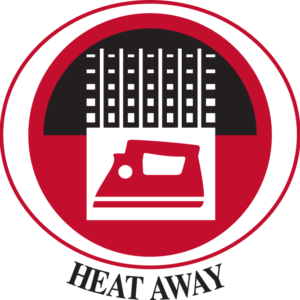 Sulky Heat-Away
Sulky Heat-Away
Heat-Away is an amazing stabilizer that disintegrates once you iron it! This is an ideal stabilizer for projects that you can’t get wet, like burlap! Burlap has gotten extremely popular lately, and it can handle a great deal of heat, but does not behave well when wet. Heat-Away is also perfect for thread stetting or just quilting a quilt. Simply trace your design onto the Sulky Heat Away, use a little KK 2000 to temporarily stick the Heat-Away to the right side of your fabric and sew over the lines! You can do it free-motion or let the feed dogs guide the stitching. When you are finished stitching, then comes the fun part. You just iron the Heat-Away in a circular motion, the KK 2000 will dissipate and the Sulky Heat-Away balls up and you just brush the little balls away. Like magic, your project looks great.  (If you didn’t stay on the lines – they’re gone anyway!)
So there you have it! Those are the BASIC uses of all the Sulky Stabilizers. I say “basic” because we haven’t even scratched the surface of the myriad of ways we can use these stabilizers and I will start delving into all of that next week. My question for you this week is: What is your favorite way to use Sulky Stabilizers? Let me know in the comments below. The best way for us to learn is for all of us to share, so please share with us your tips, tricks and favorite uses in the comments. And keep the questions coming!
Happy Sewing!

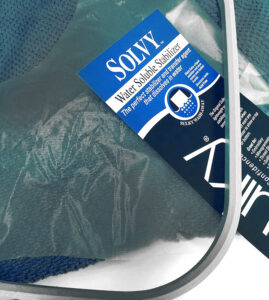
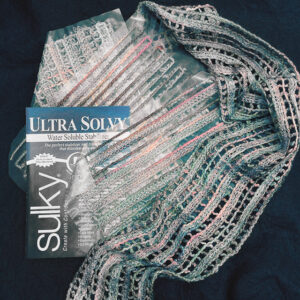
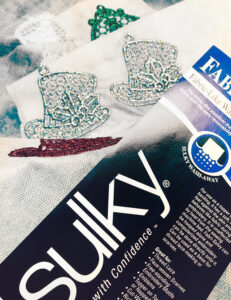
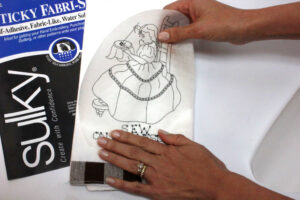
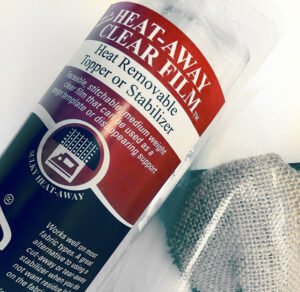

Is there any way you can give us a printable version so we can refer to this information later when we need to purchase stabilizer? As it is now, the pictures are so big and would really use a lot of ink,, and the “print preview” plainly shows that the words are cut off on the right-hand side. Thanks.
I am creating a pdf for you to download that will give you this basic info for each of the 4 stabilizer categories. I should have that ready for my next post in the series!
Shirley…if you click on the highlighted product name (Heat away) it will take you to their web site to purchase items, then under the items picture is a printable information sheet with instructions and uses for each product listed above.
I, too, would like to have a printable version of this. I am anxious to see if this can be supplied. Thanks so much !
I am working on a pdf for you to download and possibly an infographic that you can Pin on your Pinterest page or print and put by your machine. Thank you for the awesome feedback ladies!
Cant wait to try tbis stuff. The quilting aplication is great idea
Just finished using Ultra Solvy and can’t get the paper out of the narrow spaces (blades of grass, etc.). What am I doing wrong. If I pull most of the paper off first, it works better. However, even soaking in warm water I can’t remove the paper from this situation. Help, please. I have many more designs to go.
Sulky Ultra Solvy does not have a paper backing. Is it possible that you are using Sulky Sticky Fabri-Solvy or Sulky Sticky +? Email me a picture of the problem area and we will get it worked out! My email is on the Contact page of the blog.
Kelly—Thank you for responding to the problem I have been having. I think I figured out the problem. I had put the label from the stabilizer inside the tube. We had the shelf fall down and I think it got into the wrong tube. The Sulky product is a semi Clear stabilizer, I think. The one I used is white with one side that I wiped with a damp sponge and stuck the fabric to it. I think it is a tear away and that was the problem. I should have known better. I am just glad that it could be torn away from the design, as it was a project that shouldn’t have stabilizer showing from the back side. If I am wrong in this analysis, please let me know. Again, thanks for responding. Norma
I am really enjoying your stabilizer series. I am new to machine embroidery, although I have been doing hand embroidery for more years than I care to admit! Thanks for making things easier.
Thanks for reading, Sandy! It’s been fun to write. I am learning alot myself!
I’ve recently started hand embroidering patches, using Paper Solvy, but whenever I rinse the paper away, the parts under the embroidery don’t melt away, leaving white pieces sticking out. Any tips on fixing this issue?
Hi Sandy –
Paper Solvy is not the best choice for this type of embroidery – it behaves too much like paper (which is a plus sometimes, but not for what you’re doing). I think what’s happening is you may not be thoroughly rinsing it the first time, and what remains is wood pulp. There are better water solubles for this…one in particular that I think you will love: Stick ‘n Stitch: https://www.sulky.com/item/stick-n-stitch-8-12-x-11-printable-sheets. It also comes in 8-1/2″ x 11″ sheets, and is printable and traceable. But it will not leave any paper remnants like Paper Solvy can (because Paper Solvy actually has a wood pulp component). It has a release sheet, too, so when you peel it off it adheres to the fabric and you can hoop or not hoop.
With Paper Solvy you need to be sure to thoroughly rinse the stabilizer away so no small bits remain. They do become translucent when wet, so you should “over rinse” and gently rub the item to release all the little bits. But once it is rinsed, what remains showing is likely paper pulp that did not get thoroughly rinsed away the first time. Hard to get out. Pretty much tweezers is the only way once it’s rinsed and dried.
I do think that you will truly love the other water soluble for hand embroidery. It is soft and pliable and feels like fabric. It won’t be as stiff and it will be stronger. And just like with any water soluble, once it’s rinsed away it’s gone – including the lines – so if you didn’t stay on them, it just doesn’t matter. Feel free to contact me if you have further questions at: patti.lee@sulky.com
I like the English Paper Piecing technique and use it for applique. What I want to know is, is there a Sulky product that is fusible to fabric that I can leave in the enclosed shape and stitch down, that will disintegrate after washing without leaving any sticky residue inside? It would save me having to remove shapes before stitching, making stitching the shape down easier and would add a bit of body to the shape.
We don’t currently have a stabilizer like that but I like the idea! I will bring that suggestion to the people who make those kinds of decisions.
I used ultra solvy on the backs of towels for hoopless embroidery. Upon completion I tried to tear away the excess and it stuck like glue. It pulled the loops of the towels and generally was awful!
Jan, I am sorry your experience was awful. Ultra Solvy is not made to tear away. It is our thickest water soluble stabilizer and can only be removed with water. We do recommend that you cut away any excess before washing the rest of the Ultra Solvy away, but that is just so it will dissolve more quickly. The thickness of this stabilizer is great for stabilization, but it will not tear away.
Thank you
I want to embroider my Jean jacket and I want to use iron on transfers to create a design to embroider but the transfers do not show up on denim, can you iron on transfers onto sulky? If so which type of Sulky would work for this type of project?
Hi Carolee,
You can use Sulky Stick n Stitch to transfer designs right onto the jacket. The product is a self-adhesive sticky-back stabilizer that you can print onto, draw onto, transfer a design by tracing your transfer onto the stabilizer side (not paper side). Then cut around it and remove the paper backing. Stick it to the jean jacket and embroider through all layers. When the embroidery is complete, wash away the stabilizer completely under running water until it dissolves. Then air or machine dry the jacket. We think you will love this product!
I just started doing freestanding lace projects that recommend using Solvy Ultra. So far so good, your products are great! Can you tell me how many stitches one layer of this product supports? Small ornaments are 8-10,000, but bigger ones can be 24,000+ ? Any guidance would be much appreciated.
Hi Ann,
I’m so glad you are loving the Sulky Ultra Solvy! There is really no “rule” regarding stitch count. The Ultra Solvy is quite heavyweight and will support those larger designs with no problems. You can always double up the stabilizer, too, if you’re unsure. I recently stitched a FSL butterfly and used two layers of Ultra Solvy to make sure I could manipulate it and form it into shape, so not washing it away entirely to leave some of the stabilizer in the stitches. But if you are washing away all the stabilizer for lace, you probably only need one layer. If you’re finding that the Ultra Solvy is getting perforated due to the numerous needle penetrations, float an additional layer under the hoop and continue the embroidery. That should stabilize things and ensure a proper stitchout.
Ellen,
Thank you so much for your speedy reply. This is exactly what I needed to know.
Take care and have a wonderful day! 🙂
I am embroidering tulle, and find that the designs loose their shine and some of the stitch structure when I wash it away…would the heat away be better?
It may be that you need another layer of tulle, and/or more water soluble stabilizer. It could be the tulle shrinking, too. You don’t say what thread you’re using, but the water soluble shouldn’t affect the thread luster. Perhaps…if you’re not rinsing enough away and leaving some in to make it stiff? Sulky Heat-Away would not be a good choice for this because the tulle may not take the iron temperature needed to remove the Heat-Away.